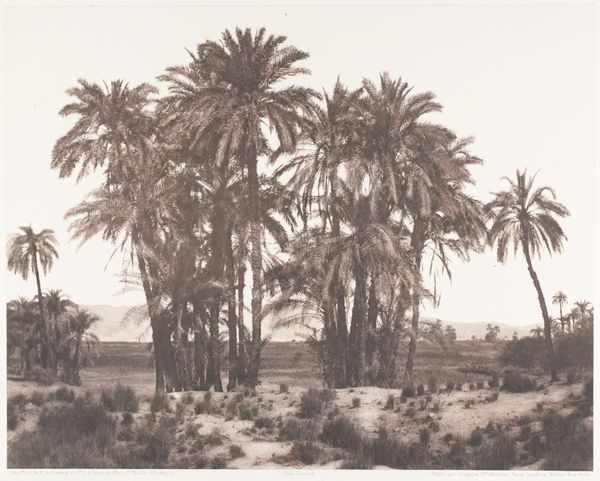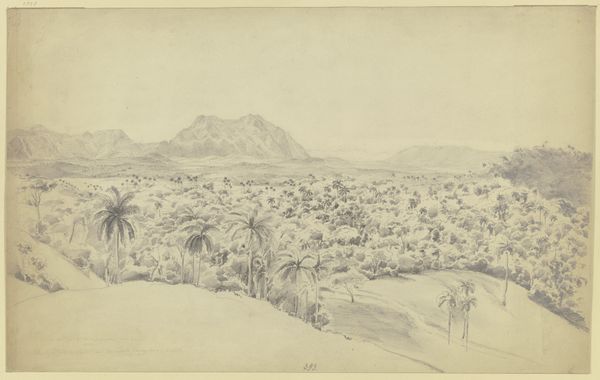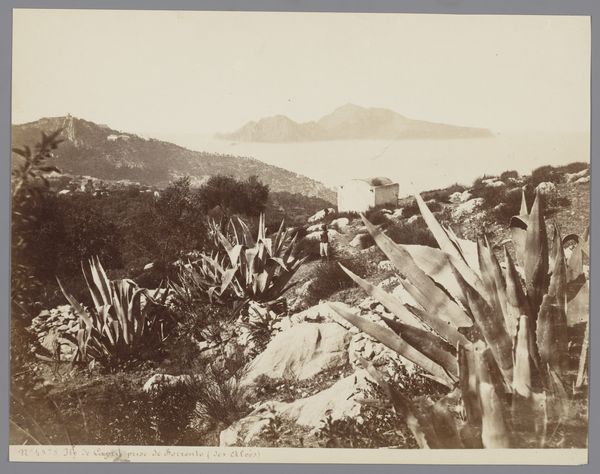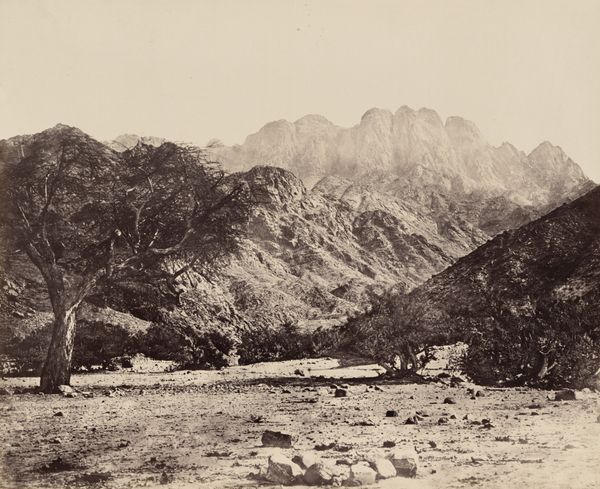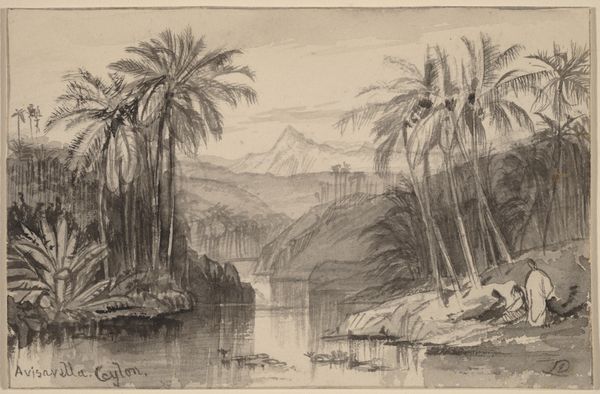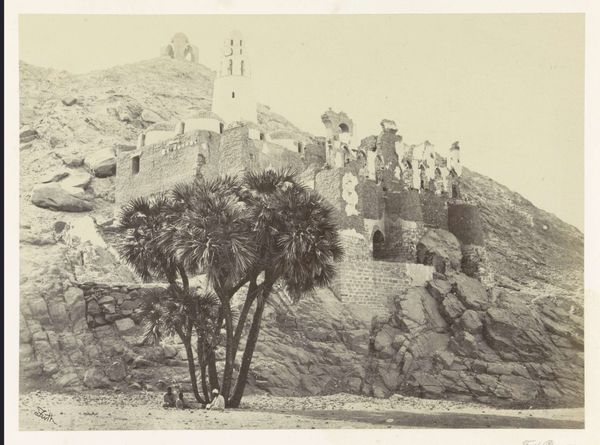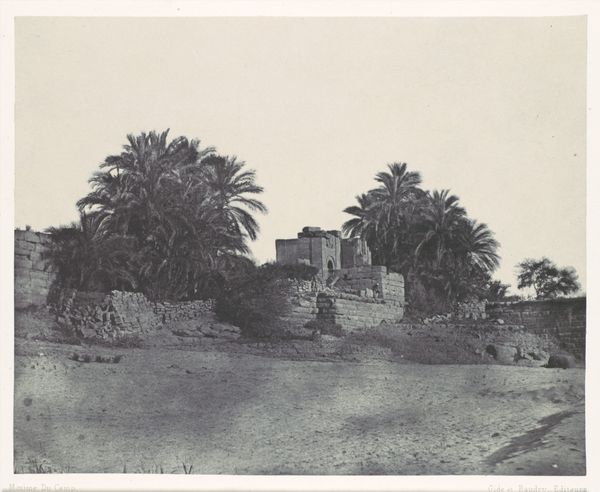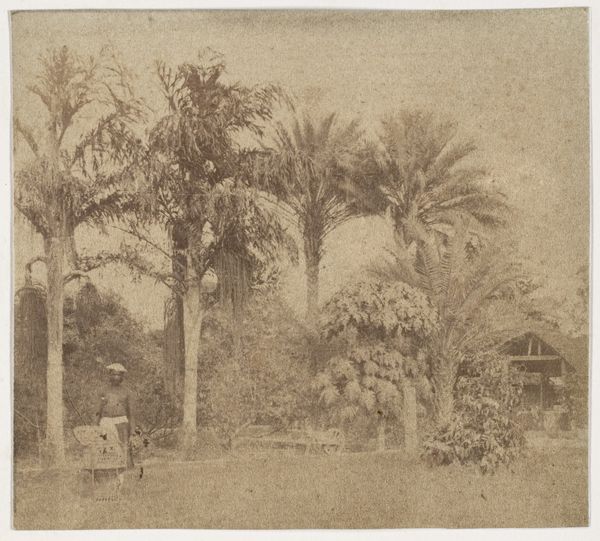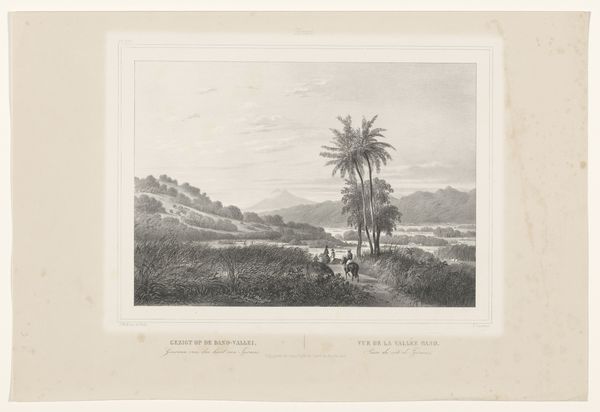
#
scenic
#
natural shape and form
#
snowscape
# print
#
countryside
#
outdoor scenery
#
low atmospheric-weather contrast
#
monochrome photography
#
nature heavy
#
scenic spot
#
shadow overcast
Dimensions: plate: 19.8 x 25.2 cm (7 13/16 x 9 15/16 in.) sheet: 26.5 x 33.4 cm (10 7/16 x 13 1/8 in.)
Copyright: National Gallery of Art: CC0 1.0
Editor: Here we have George Elbert Burr's "A Mirage, Arizona," created around 1929. It's a print, and the stark contrast immediately struck me. The desert landscape feels both harsh and strangely serene. What's your take on this work? Curator: It’s interesting how Burr frames the Arizona landscape, isn't it? Consider the 1920s context. Tourism to the Southwest was increasing, but images often romanticized or exoticized the region. Burr, however, offers something different. What kind of public image of Arizona do you think he's creating, compared to those typical narratives? Editor: That's a great point. It feels less staged than some tourist imagery I've seen. More raw, maybe? It's not all vibrant sunsets and dramatic vistas. This print emphasizes the quiet endurance of the desert. Curator: Exactly. Notice the composition – the etching emphasizes the sparse vegetation and distant, almost mirage-like mountains. There is this implied tension between nature and civilization. Is it a landscape that invites settlement, or does it communicate a sense of isolation? Editor: I see what you mean. The technique itself, the starkness of the print, really emphasizes that sense of isolation, almost pushing back against an easy romantic view of the place. Curator: The availability and promotion of these prints contributed to shaping perceptions of the American Southwest. They provided alternative representations of the desert landscapes accessible to wider audiences through galleries and print collecting circles. Editor: It's fascinating how a single image can hold so much cultural weight. I didn't realize the extent to which prints could challenge existing narratives about a region. Curator: Indeed. Examining Burr's print highlights the public role of art in shaping perceptions and even influencing policies, demonstrating that landscapes aren't just beautiful; they’re also political.
Comments
No comments
Be the first to comment and join the conversation on the ultimate creative platform.
